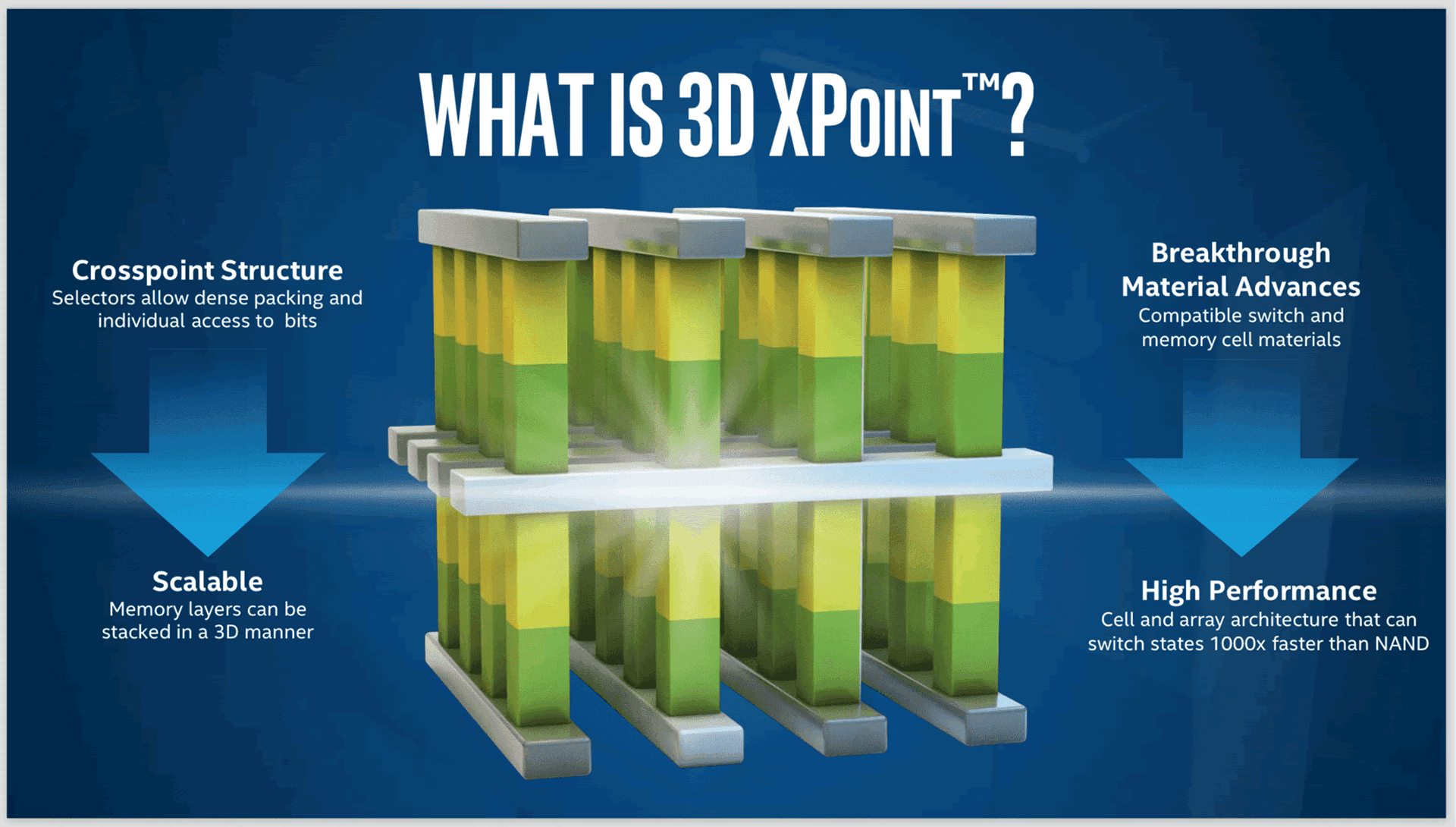The development of NVM Express communications protocols means that the previously untapped potential of Solid State Drives (SSDs) will be fully unlocked, allowing large-scale data enterprises to function at unprecedented speeds. New NVM storage solutions, referred to under the umbrella of 3D Xpoint (crosspoint) will push storage and transfer limits even further.
These changes mean that server-operators or performance-dependent commercial operations will have access to more storage types than ever before, each enhancing their storage practices with their respective strengths. New technology like NVMe and 3D Xpoint will fundamentally change the way data storage is approached, stemming from the top and travelling all the way down. Here is how, and why.
The SSD’s Long Journey
For a time, solid state drives were considered little more than an experimental technology. A prohibitively high entry point and low storage capacity relative to hard disks meant that all SSD’s low latency capabilities mattered little to the consumer and industrial market at large. In 1991, SanDisk created one of the first commercially viable SSD cards, good for only 20MB and at a price point of $1,000.
Things change, of course. SSDs became less of a niche product for military and top-tier enterprise applications as reliability increased while manufacturing costs decreased. 2006 marked the year that SSDs became available to the mass consumer market, and Windows Vista released the same year as the first common consumer OS to natively support the devices.
As SSDs evolved so, too, did hard disk drives. Capacity swelled, and technologies like eSATA greatly boosted the read/write speeds for both consumer and enterprise-level uses. To this day, regular HDDs offer the lowest cost per gigabyte.
SSDs remain prized for their ability to boot near instantaneously, creating a stratification in use cases. The average consumer might purchase a 1 terabyte hard drive and then a 200 GB SSD for roughly the same price. This setup allows them to boot their OS and any read-intensive applications with next to no latency using an SSD while taking advantage of the dirt-cheap storage possibilities that HDDs offer.
We see this happening on the commercial scale now, too, but for a long time there was a barrier. SSDs were relegated to transfer technology created specifically for mechanical disks, not NAND. Both SATA and SAS are fundamentally geared to work at lower transfer speeds than what an SSD can handle, topping out at about 500 MB per second for SATA and 1.5 GBps for SAS in a realistic setting.
Built specifically for SSD technology, NVMe can do much better than that. Connected to PCIe, it can handle 985 MBps per lane. Using a four-lane setup means that realistic speeds of 4 GBps can be achieved.
How NVMe and 3D Xpoint will Change Storage Forever
Harder, better, faster, stronger — we’ve seen hardware evolve before. The fundamental difference in this scenario is that NVMe and PCIe will enable new heights of capability for storage technology that the market is already largely accustomed to. With Intel’s pioneering 3D XPoint entering the market within the next coming months, we will see even more dizzyingly high capabilities unlocked and at what promises to be a fairly approachable price point. Since regular HDDs are not going away, this fundamentally altered landscape means that enterprises handling data storage or large volumes of data transfer will encounter more choices than ever when trying to optimize their cost/performance balance specific to each individual process.
By making the most of each option, they will enable crucial improvements to the way data is written, accessed, transferred and then stored long-term.
NVMe-enabled 3D Xpoint will allow for blinding-fast access speeds on the hottest or most-regularly used data NVMe-enabled SSD will be able to provide a cheaper cost per gigabyte at faster speeds than before, allowing for “warm” data to stay accessible at a moment’s notice Traditional mechanical HDDs will provide the bulk of archival storage at an extremely low cost per gigabyte but slower and slower relative read/write speeds What all this means is that the storage tiering solutions needed to automate transfer of data are about to get a lot more complex. We will discuss the ramifications of this exponentially growing complexity in Part II of this post. To learn more about solutions from UNICOM Engineering contact us today.
